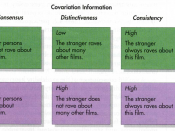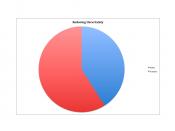CONTINGENCY THEORY Two points of view: Jay Galbraith (1973) Lawrence & Lorsch (1967) Galbraith views: ?The greater the task uncertainty, the greater the amount of information that must be processed among decision makers during task executions in order to achieve a given level of performance?.
3 Assumptions: 1. There is no one best way to organize 2. Any way of organizing is not equally effective 3. The best way to organize depends on the nature of the environment to which the organization relates (Organization form matters).
Lawrence & Lorsch Came up with Contingency Theory They argued that different environments place differing requirements on organizations; specifically, environments characterized by uncertainty and rapid rates of change in market conditions or technologies present different demands--both constraints and opportunities.
They conducted studies of organizations in the plastics, food processing, and standardized container industries.
Assess the relation between their environments (high/low uncertainty) and the internal features of each organization.
Weick?s Model of Organizing Focuses on the social psychological level.
The focus of our attention should be ?organizing?.
Weick?s defination of Organizing: ?The resolving of equivocality in an enacted environment by means of interlocked behaviors embedded in conditionally related process? Interlocked behaviors consist of: Repetitive, Reciprocal, Contingent behaviors (behaviors that develop and are maintained between 2 or more actors).
Making Sense?communal sense decisions gives rise to a repertory of repeated routines and patterns of interaction which constitute the process of organizing.


